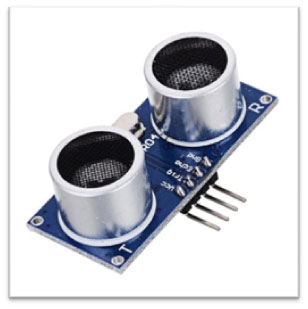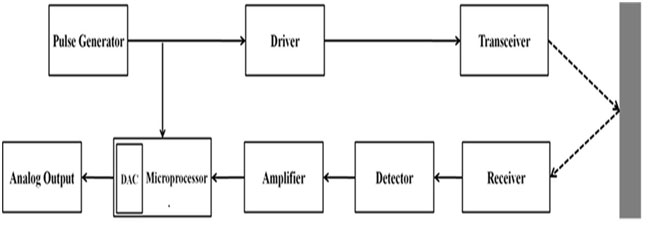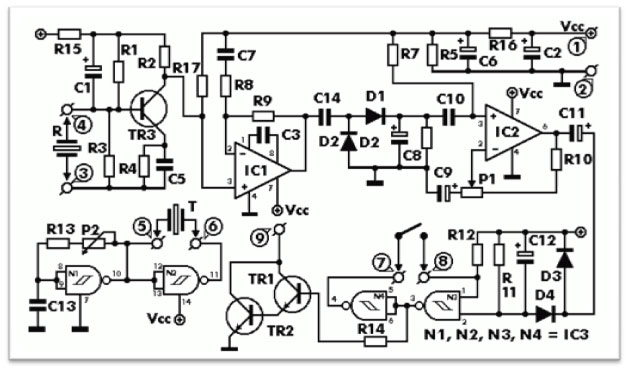- An ultrasonic sensor is an electronic device that measures the distance of a target object by emitting ultrasonic sound waves and converting the reflected sound into an electrical signal. Ultrasonic waves travel faster than the speed of audible sound.

Ultrasonic Sensor - Ultrasonic sensors have two main components: the transmitter (which emits the sound using piezoelectric crystals) and the receiver (which encounters the sound after it has traveled to and from the target).
- To calculate the distance between the sensor and the object, the sensor measures the time it takes between the emission of the sound by the transmitter to its contact with the receiver. The formula for this calculation is D = ½ T x C.
- Ultrasonic sensors are used primarily as proximity sensors. They can be found in automobile self-parking technology and anti-collision safety systems. Ultrasonic sensors are also used in robotic obstacle detection systems and manufacturing technology.
- Ultrasonic sensors are also used as level sensors to detect, monitor, and regulate liquid levels in closed containers (such as vats in chemical factories). Most notably, ultrasonic technology has enabled the medical industry to produce images of internal organs, identify tumors, and ensure the health of babies in the womb.
- Ultrasonic Sensors are best used in the non-contact detection of
- Presence
- Level
- Position
- Distance
- Ultrasonic is Independent of
- Light
- Smoke
- Dust
- Color
- Material (except for soft surfaces, i.e. wool, because the surface absorbs the ultrasonic sound wave and doesn’t reflect sound.)
- This Ultrasonic Sensor Circuit consists of a set of ultrasonic receiver and transmitter which operate at the same frequency. When something moves in the area covered the circuit’s fine balance is disturbed and the alarm is triggered. The ultrasonic circuit is very sensitive and can be adjusted to reset itself automatically or to stay triggered till it is reset manually after an alarm.
- The ultra sonic transmitter is built around two NAND gates wired as inverters and they form a multi-vibrator the output of which drives the transducer. The trimmer P2 adjusts the output frequency of the transmitter and for greater efficiency it should be made the same as the frequency of resonance of the transducers in use. The ultrasonic receiver uses a transducer to receive the signals that are reflected back to it the output of which is amplified by the transistor TR3, and IC1 which is a 741 op-amp. The output of IC1 is taken to the non inverting input of IC2 the amplification factor of which is adjusted by means of P1.

Features
- Power Supply :+5V DC
- Quiescent Current : <2mA
- Working Current: 15mA
- Effectual Angle: <15°
- Ranging Distance : 2cm – 400 cm/1″ – 13ft
- Resolution : 0.3 cm
- Measuring Angle: 30 degree
- Trigger Input Pulse width: 10uS TTL pulse
- Echo Output Signal: TTL pulse proportional to the distance range
- Dimension: 45mm x 20mm x 15mm
Specifications
- Power supply: 5V DC
- Quiescent current: <15mA
- Effectual angle: <15°
- Ranging distance: 2cm – 350 cm
- Resolution: 0.3 cm
- Output cycle: 50ms
Advantages of Ultrasonic Sensors
- Not affected by color or transparency of objects.
- Can be used in dark environments.
- Low-cost option.
- Not highly affected by dust, dirt, or high-moisture environments.
- Cannot work in a vacuum.
- Not designed for underwater use.
- Sensing accuracy affected by soft materials.

